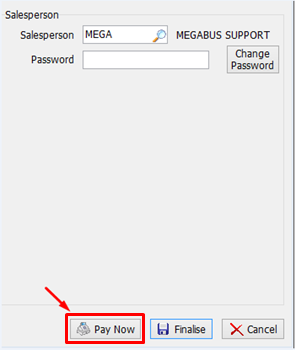Marlin GTX enables payment terms to be added that define when payments on invoices are due.
In some cases they also determine the percentage of the payment that must be made, and can be used for both customers and suppliers.
Payment terms can be added and edited by selecting System > System Files > Banking and Payments > Payment Terms from the menu bar.
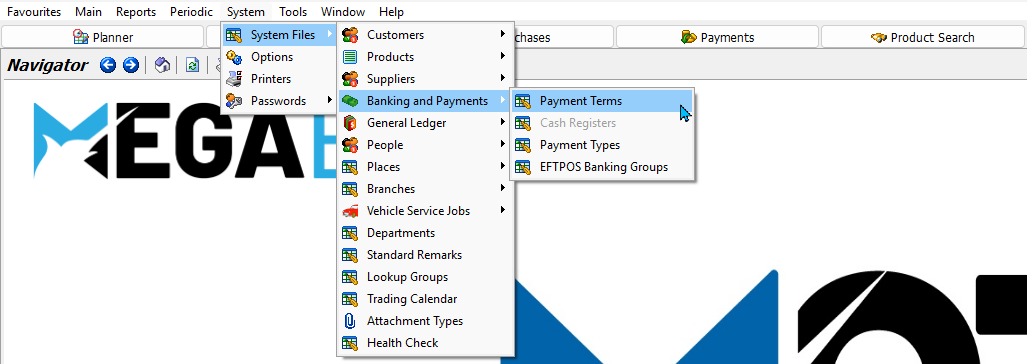
Adding Payment Terms
System > System Files > Banking and Payments > Payment Terms
Payment terms for both customers and suppliers can be added using the Payment Terms module.

To add new payment terms:
- Click on the Add button (top of module)
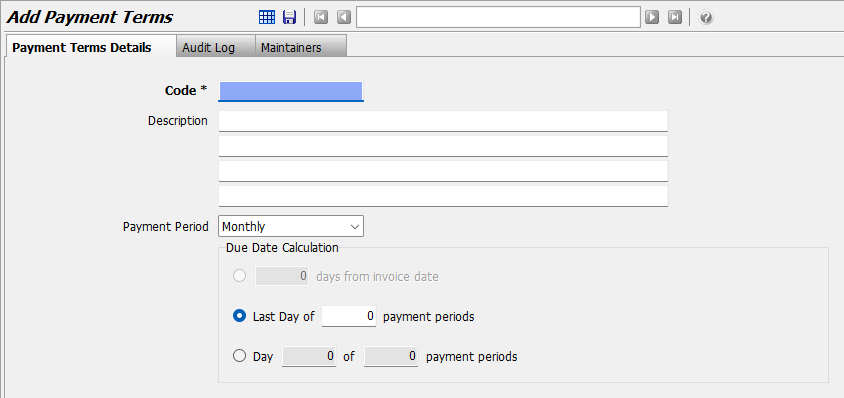
The Add Payment Terms window will open:
-
Enter a unique Code for identifying the payment term
-
Enter a Description for the payment term
-
Select the Payment Period:
-
COD (Close of Day): Due by the end of the day. If the transaction remains unpaid before end of month, it remains in the current ageing period
-
Weekly: Select the number of weeks and the day (as a number) in the last week the transaction is due. The first week begins on the first Monday after the transaction date
-
Monthly: Select the number of months and the day (as a number) in the last month the transaction is due. The first month begins on the first day of the month after the transaction date
-
Transaction Date: Due a specific number of days after the transaction date (as defined by the due date calculation below)
-
-
Define the Due Date Calculation using the fields below
- The appropriate fields will become active depending on which Payment Period is selected
Payment Schedules
System > System Files > Banking and Payments > Payment Terms > [Payment Term]
If payment schedules are enabled in your system, there will be an extra section at the bottom of the Due Date Calculation section, enabling you to split the payment into smaller amounts across the period.
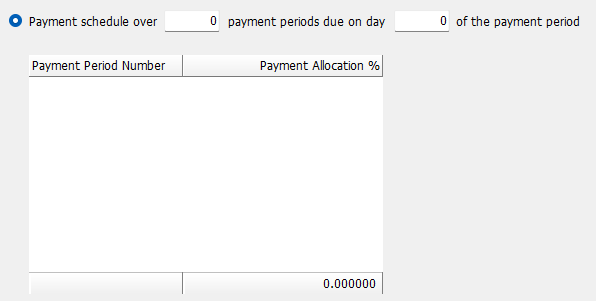
To set up a scheduled payment:
- Select the Payment Period
- Click the Payment Schedule toggle
- Enter the number of payment periods to split the payment over
- Enter the day of the period that the payment is due (as a number)
- The breakdown of payment percentages will be automatically calculated and shown in the table below.
To set up a split payment over three months:
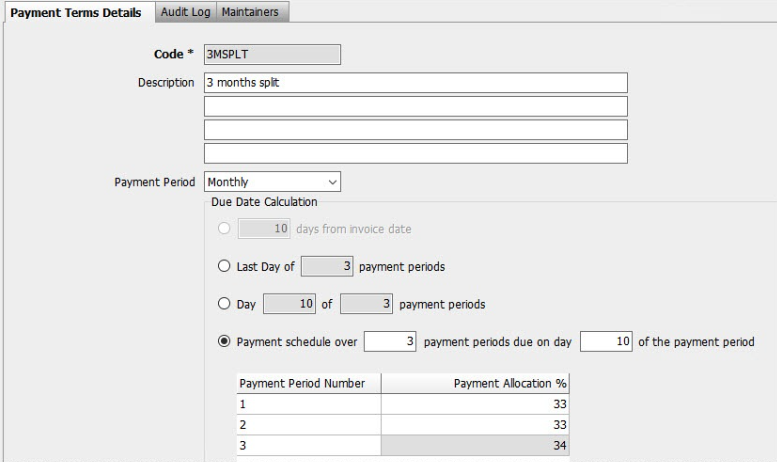
Assigning Payment Terms
Payment terms can be assigned to account customers and suppliers in the Options tab of their Maintenance file.
Supplier Payment Terms
Main > Suppliers > Manage Suppliers > Edit > Options
To set a supplier’s payment terms:
- Open the supplier record in Edit mode
- Click on the Options tab
- Click on the Payment Terms picker
- Select the terms offered by the supplier from the list

Customer Payment Terms
Main > Customers > Manage Customers > Edit > Options
Customers can be assigned multiple payment terms.
You need to indicate which payment terms are preferred:
- The preferred terms are selected by default when you finalise sale invoices for the customer
- You will still be able to choose one of the other assigned terms instead
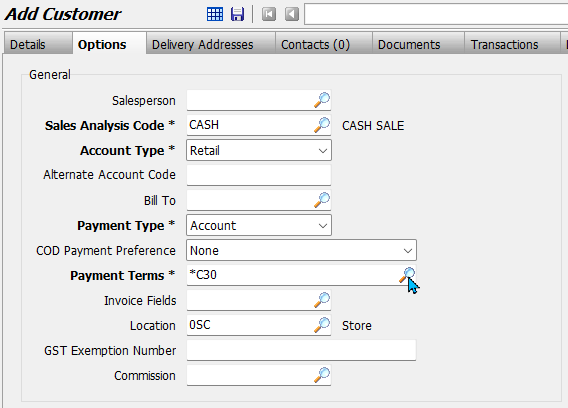
To assign a customer’s payment terms:
- Open the customer record in Edit mode
- Click on the Options tab
- Click on the Payment Terms picker
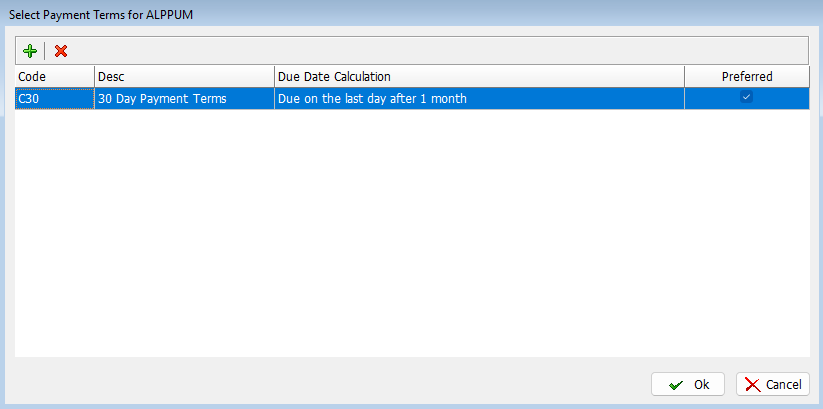
The Select Payment Terms pop-up will open:
-
Add one or more terms from the list
- Click Add and select from the list
- To remove: Select the terms and click Remove
-
Select the Preferred checkbox on the right to set the default terms
-
Click OK
Due Dates
... Work Order / Invoice > Finalise
Due dates are determined when invoices are finalised for account customers or suppliers, using the Payment Terms picker.
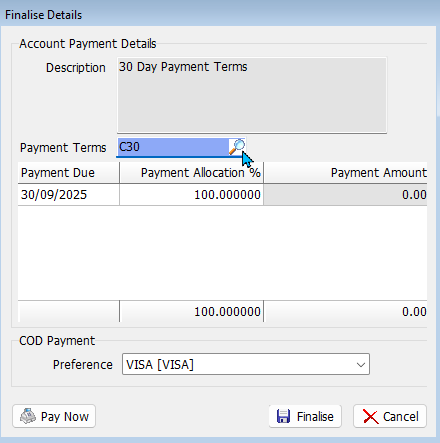
The default payment terms are used unless different terms are selected for the transaction:
- Suppliers: Different terms can always be selected
- Customers: Depends on whether multiple terms are allowed
Other transactions, such as credit notes, account payments and journals, do not use payment terms or due dates.
These transactions default to today, but the transaction date can be changed if needed.
Outstanding Payments
Outstanding payment due dates and amounts can be reviewed using the below methods.
Customers:
- Customer Payments Due Report: Main > Customers > Payments Due
- Transactions Tab: Main > Customers > Manage Customers > [Customer] > Transactions tab
- Account Statements: Main > Customers > Customer Statements > [Cut-off Date] > [Customer] > Generate
Suppliers:
- Supplier Payments Due Report: Main > Suppliers > Payments Due
- Transaction Header Detail in supplier records: Main > Suppliers > Manage Suppliers > [Supplier] > Transactions tab
Pay Now
Click the Pay Now button when invoicing an account customer to accept payment at the time of the sale.
